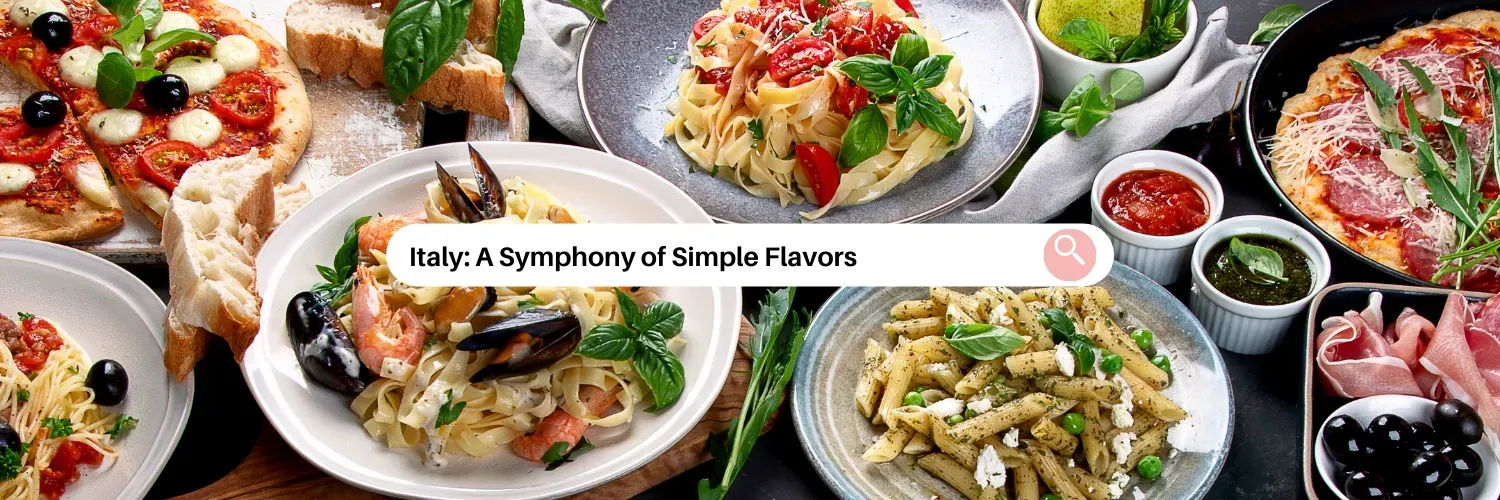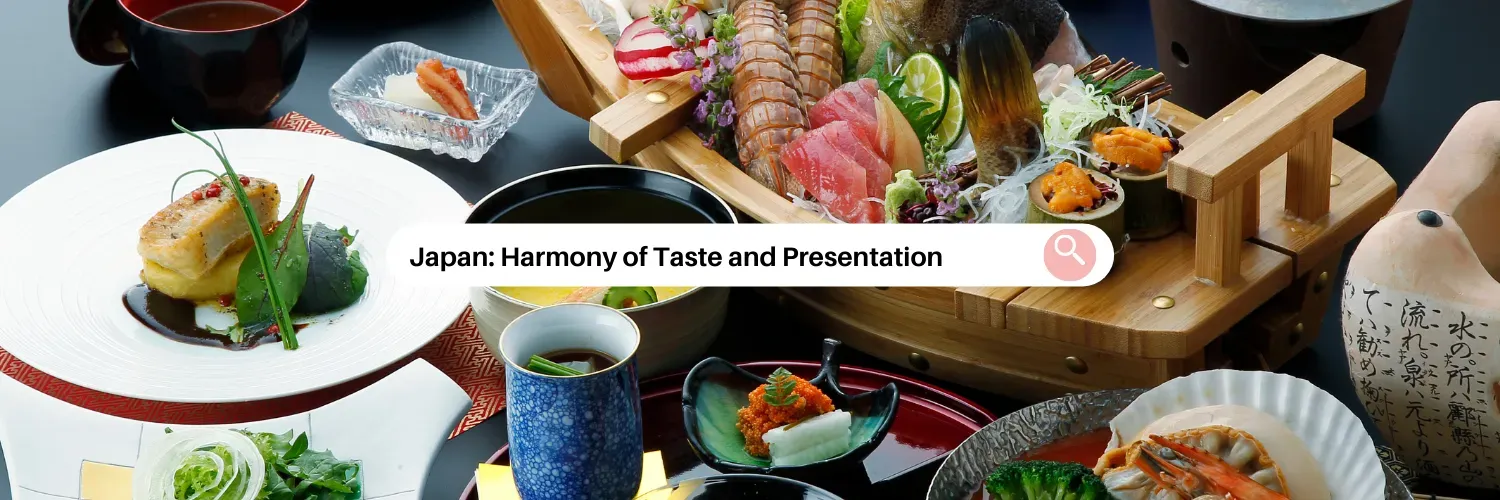Discovering the World's Best Food
Embarking on a culinary adventure is an enriching experience that transcends mere dining—it's a journey through cultures, histories, and landscapes, brought to life through flavors, aromas, and textures unique to each locale.
The quest to discover the world's best food is inherently subjective, influenced by personal preferences, cultural backgrounds, and individual tastes. Yet, this diversity makes the journey endlessly fascinating and rewarding.
ToC
A World of Flavorful Delights
Each country offers a window into its soul through its cuisine, with distinctive culinary experiences emerging from unique ingredients, cooking techniques, and cherished dishes. Here, we explore some of the world's most renowned culinary destinations, delving into what makes their food culture stand out.
Italy: A Symphony of Simple Flavors
- Pasta, in its myriad forms, celebrates the diversity of Italian regional cooking, from the robust ragùs of Bologna to the delicate seafood pastas of the Amalfi Coast.
- From its humble beginnings in Naples, pizza has become a global phenomenon, yet its simplest form—Margherita—remains a benchmark of culinary perfection.
- Gelato, with its dense, rich texture and intense purity of flavor, offers a sweet conclusion to the Italian dining experience.
France: Elegance in Every Bite
- Coq au Vin represents the depth of flavor achievable through slow cooking, while Ratatouille showcases the Provençal region's bountiful produce in a medley of colors and textures.
- Crème Brûlée, contrasting with caramelized sugar and creamy custard, epitomizes the elegance of French desserts.
Japan: Harmony of Taste and Presentation
Japanese cuisine celebrates seasonal ingredients and the aesthetic of food presentation. Balance and harmony define the Japanese culinary approach, which emphasizes enhancing the ingredients' natural flavors rather than overshadowing them.- Sushi, with its delicate balance of vinegared rice, fresh fish, and subtle seasonings, is an art form. It reflects the Japanese ethos of simplicity and respect for ingredients.
- Ramen and Tempura, meanwhile, demonstrate the versatility of Japanese cooking, offering depth and texture that satisfy the palate.
India: A Celebration of Spices
- Biryani, a fragrant rice dish with layers of meat, spices, and herbs, embodies the complexity of Indian cooking.
- Butter Chicken and Paneer Tikka serve as accessible introductions to the rich world of Indian flavors, appealing to those in search of bold, unforgettable tastes.
Thailand: A Dance of Sweet, Sour, Salty, and Spicy
- Pad Thai,(getButton) #color=(#de1738) #text=(Green Curry and Tom Yum Soup) are emblematic of Thailand's ability to combine ingredients in surprising and harmonious ways, providing a vibrant and deeply satisfying culinary experience.
Mexico: Bold Flavors and Time-Honored Traditions
- Chilies, corn, and beans are the pillars of Mexican cooking, giving rise to iconic dishes such as tacos, enchiladas, and tamales.
- These dishes, each with its own regional variations, embody the spirit of Mexican culinary tradition and offer a taste of Mexico's diverse landscapes and cultures.
Portuguese Cuisine: A Flavorful Journey
Portuguese cuisine is a delicious blend of Mediterranean and Atlantic influences. It's characterized by its use of fresh, local ingredients, bold flavors, and emphasis on seafood.Key Features of Portuguese Cuisine:
- Seafood: Portuguese cuisine is renowned for its fresh seafood, including fish, shellfish, and octopus. Popular dishes often feature grilled, baked, or stewed seafood.
- Olive Oil: Olive oil is a staple ingredient in Portuguese cooking, used for flavoring dishes and sautéing ingredients.
- Rice and bread are common meal accompaniments, often served with flavorful sauces or stews.
- Bacalhau: Codfish, known as "bacalhau" in Portuguese, is a national treasure and appears in countless dishes, often prepared uniquely.
- Sweets: Portuguese cuisine offers a variety of delicious sweets, including pastries, cakes, and tarts. Pastel de nata, a custard tart, is a particularly famous dessert.
-
Popular Portuguese Dishes:
- Bacalhau à Brás: Scrambled eggs with shredded codfish, potatoes, onions, and olives.
- Caldeirada: A hearty seafood stew with a variety of fish and shellfish.
- Francesinha: A sandwich with grilled meat, cheese, and a rich, spicy sauce.
- Pastel de Nata: A custard tart with a flaky pastry crust.
- Cozido à Portuguesa: A traditional stew with various meats, vegetables, and potatoes.
The Spanish influence on Latin American cuisine
This blend of (getButton) #icon=(link) #color=(#2339bd) #text=(Indigenous and Spanish culinary traditions) has given rise to the rich and varied food cultures that define Latin America today.
Introduction of New Ingredients
One of the most significant impacts of Spanish colonization was the introduction of new ingredients to the Americas. The Spanish brought livestock such as cattle, pigs, and chickens, introducing meat and dairy products to the local diet. (getButton) #color=(#de1738) #text=(Wheat, rice, olives), (getButton) #color=(#001871) #text=(onions), garlic, and a variety of fruits and spices, including citrus fruits, almonds, and saffron, were also introduced, greatly expanding the culinary palette of the region.
Regional Variations
Spanish culinary influence in Latin America is not monolithic but varies significantly from country to country, reflecting the continent's diverse environments and cultures.
Spanish cuisine blended with African and Indigenous influences in the Caribbean to create unique flavor profiles, evident in dishes such as Cuban ropa vieja and Puerto Rican mofongo.
Spanish and Indigenous cuisines merged with Italian, German, and other European influences in the Southern Cone, leading to a rich culinary mosaic.
Contemporary Influence
Today, the Spanish influence remains a cornerstone of Latin American cuisine, continually evolving through ongoing cultural exchanges. Modern chefs and food enthusiasts explore this heritage, reinterpreting traditional dishes innovatively while still honoring their origins.
This dynamic interplay ensures that the Spanish legacy in Latin American cuisine continues to enrich and inspire food cultures across the continent.
Conclusion
Discovering the world's best food is an adventure of personal exploration and cultural discovery. Each country presents unique flavors shaped by history, geography, and people. By engaging with different cuisines, we broaden our culinary horizons and deepen our appreciation for the rich tapestry of world cultures.
This journey of taste reminds us of the universal language of food—a language that connects, delights, and enriches our lives.





